Water Lettuce, also known as Nile Cabbage or Shellflower, is a floating herbaceous perennial from the Araceae family. Found in tropical and subtropical regions, including parts of the USA, it thrives in warm climates and is typically hardy in zones 8 to 10.
This unique aquatic plant forms small rosettes of velvety, light-green leaves that float gracefully on water surfaces, resembling leafy clusters of actual lettuce. Despite its name, Water Lettuce is unrelated to the common lettuce you find in salads. Instead, it plays an important role in ponds, aquariums, and water gardens, providing habitat for small wildlife like frogs and contributing to a natural filtration system.
In this guide, you’ll learn essential tips for growing Water Lettuce successfully and how to maintain its lush, floating greenery in ponds, tanks, or aquariums.
| Common name | Nile Cabbage, Shellflower, Water Cabbage, Water Lettuce |
| Botanical name | Pistia stratiotes |
| Family | Araceae |
| Species | stratiotes |
| Origin | Tropical and subtropical regions worldwide, USA |
| Life cycle | Perennial |
| Plant type | Herbaceous Perennial |
| Hardiness zone | 8, 9, 10 |
| Sunlight | Full Sun |
| Maintenance | High |
| Drainage | Poorly Drained |
| Growth rate | Fast |
| Spacing | Less than 12 in. |
| Flowering period | Spring |
| Height | 3 in. – 6 in. |
| Width | 3 in. – 6 in. |
| Flower color | Gold, Yellow |
| Leaf color | Gray, Silver |
| Fruit color | Green |
| Fruit type | Berry |
I. Appearance and Characteristics
Pistia is a genus of aquatic plants in the arum family, Araceae. It is the sole genus in the tribe Pistieae which reflects its systematic isolation within the family. The single species it comprises, Pistia stratiotes, is often called water cabbage, water lettuce, Nile cabbage, or shellflower. Its native distribution is uncertain but is probably pantropical; it was first scientifically described from plants found on the Nile near Lake Victoria in Africa. It is now present, either naturally or through human introduction, in nearly all tropical and subtropical fresh waterways and is considered an invasive species as well as a mosquito breeding habitat.
The genus name is derived from the Greek word πιστός (pistos), meaning “water”, and refers to the aquatic nature of the plants. The specific epithet is also derived from a Greek word, στρατιώτης, meaning “soldier”, which references the sword-shaped leaves of some plants in the Stratiotes genus.
Pistia stratiotes is a perennial monocotyledon with thick, soft leaves that form a rosette. It floats on the surface of the water, its roots hanging submersed beneath floating leaves. The leaves can measure 2 – 15 cm long and are light green, with parallel venations and wavy margins. The surface of the leaves is covered in short, white hairs which form basket-like structures that can trap air bubbles and increase the plant’s buoyancy. The spongy parenchyma with large intercellular spaces in the leaves also aids the plant in floating. The flowers are dioecious, lack petals, and are hidden in the middle of the plant amongst the leaves.
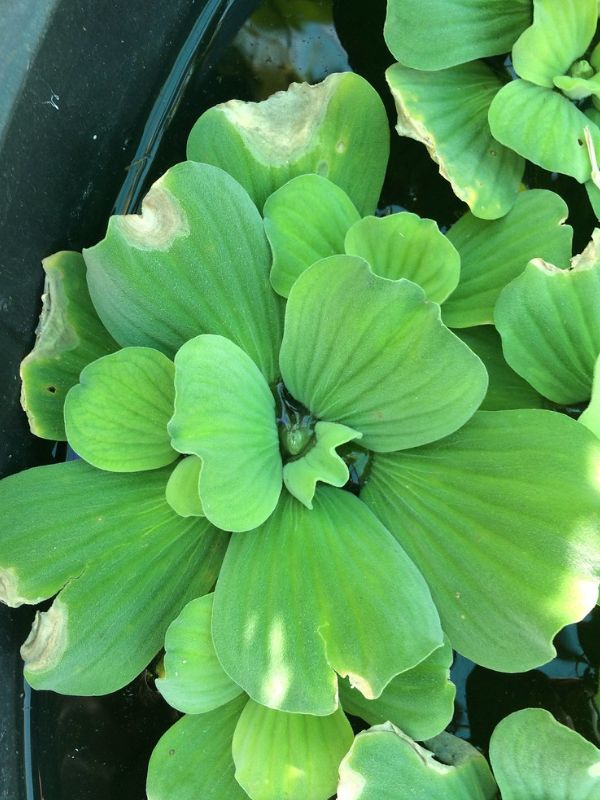
Pistia stratiotes has a spadix inflorescence, containing one pistillate flower with one ovary and 2–8 staminate flowers with two stamens. The pistillate and carpellate flowers are separated by folds in the spathe, where the male flowers are located above the female flowers. Oval, green berries with ovoid seeds form after successful fertilization. The plant undergoes asexual reproduction by propagating through stolons, yet evidence of sexual reproduction has also been observed in the ponds of Southern Brazil.
Pistia stratiotes are found in slow-moving rivers, lakes, and ponds. The species displays optimal growth in the temperature range of 22–30 °C, but can endure extreme temperatures up to 35 °C. As a result, Pistia stratiotes do not grow in colder temperatures, beyond the tropics of Cancer and Capricorn. The species also require slightly acidic water in the pH range of 6.5–7.2 for optimal growth.
II. How to Grow and Care
Sunlight
Water lettuce needs full to partial sun exposure. Afternoon shade will help protect it from intense heat. Water lettuce grown in nurseries is often raised in lower light conditions. So, give new plants time to adjust by placing them in low lighting and slowly increasing exposure to more sunlight as the plants become established.
Too much sunlight may cause yellowing leaves. By contrast, plants that receive less-than-ideal sun exposure may have leaves darker green than is typica
Temperature and Humidity
Water lettuce does best in water temperatures between 70 and 80 degrees Fahrenheit. It’s perennial in USDA zones 9 to 11 and grown as an annual outside its hardiness range.
Because this plant lives in water, it thrives in medium to high humidity levels. Low humidity levels will challenge growing this plant as it can dry out the leaves.
Watering
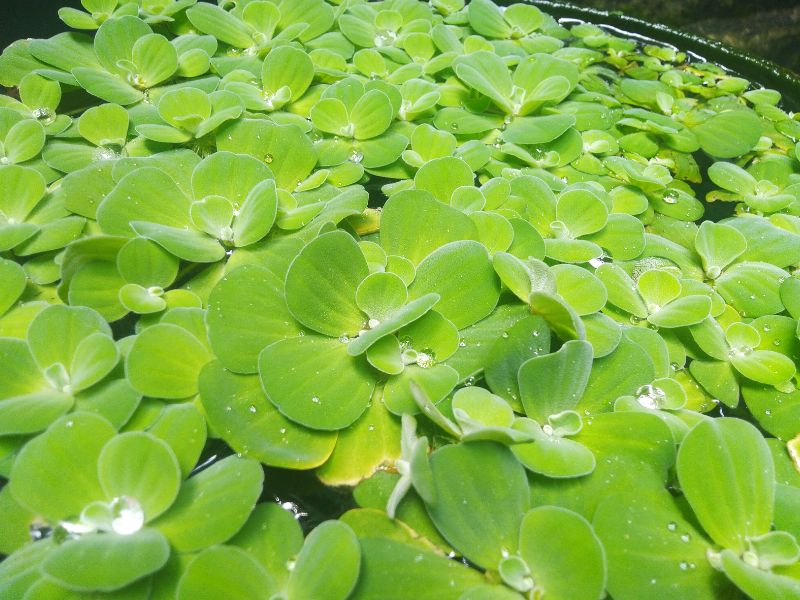
Water conditions are essential to growing water lettuce, as it is an aquatic, floating plant. Soft to moderately hard water is best. Water lettuce is sensitive to water minerals and can handle no more than 2.5 ppt of salt. It cannot tolerate lime.
Similar to considering soil pH for potted or garden plants, you should also consider the pH of water for the health of water lettuce. This plant prefers pH levels that are neutral or slightly alkaline, or slightly acidic. Aim for a water pH of 6.5 to 7.5.
Soil
The roots of this plant are free-floating, so soil is not necessary for healthy growth.
Fertilizing
If water lettuce leaves begin to turn yellow, a lack of nutrients may be a possible cause. If the water lacks the right levels of nutrients, you may need to supplement it with a fertilizer treatment.
There are several different ways to fertilize water lettuce. You can remove the plants and let them sit for a few hours in a tub of liquid fertilizer, add fertilizer straight to the pond or aquarium, or add a nutrient booster to the water.
If you add fertilizer or nutrient booster to your pond or tank, factor in its impact on other living things in your aquatic environment, such as other plants or fish. If in doubt, your best bet may be to fertilize water lettuce separately.
Pruning
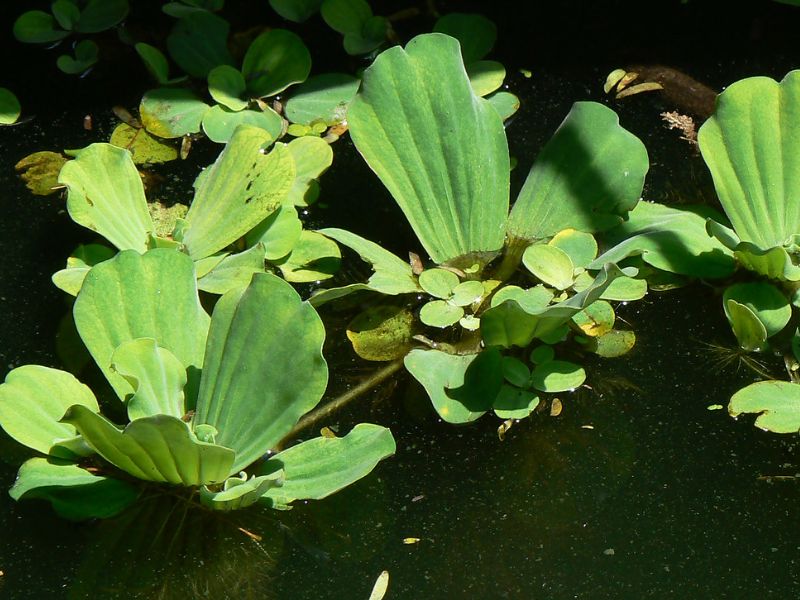
The rapid growth and invasive nature of water lettuce require that you prune away runner plants to prevent this vegetation from taking over your pond or water feature. This will usually need to be done every week. In addition, removing the larger mother plants will help slow the spread if you have an abundance of water lettuce.
Propagation
To add water lettuce to a pond or water garden, spread this floating plant on the water’s surface in the spring. Ideally, choose a spot with no current, as these plants do not grow well in moving water. If there is a current in your water environment, separate the water lettuce from the current using a floating dam. Items like plastic tubing and suction cups attached to the edges of a tank, a hula hoop, rocks, or a fishing line work well for this purpose.
Since it’s such a prolific spreader, propagating water lettuce is simple and easy. Here’s how:
- Using sharp snips, cut the stolon connecting the mother plant to the daughter plant. Daughter or runner plants are vegetation offshoots from the main plant. It will produce its own root system.
- Place the daughter plant in its new environment. These plants typically thrive but can become invasive if left unchecked.
How to Grow from Seed
Starting water lettuce from seed is not common, but it is doable. If you have seeds, here is how to start them:
- Bury the seed lightly in sand.
- Cover the sand and seed with water.
- Keep the sand and seed submerged in water.
- The seed will sprout and eventually fill the container. At this point, it’s ready to be transplanted into your aquatic environment.
Overwintering
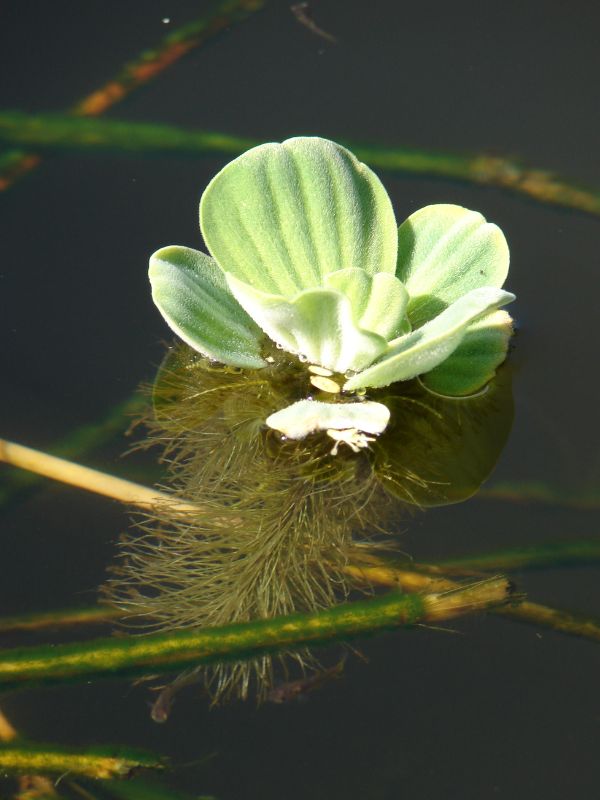
Water lettuce cannot tolerate cold temperatures. To overwinter a plant, place it in a smaller container of water (such as a fishbowl) and keep it in an area above 50 degrees Fahrenheit. Full sun exposure and occasional fertilization may be necessary. Water lettuce is inexpensive and grows fast, so it is easier and more cost-effective to buy it every year.
Pests and Diseases
Common Pests
Koi and goldfish can kill water lettuce plants by eating their roots. Insects such as the leaf weevil (Neohydronomous affinis) or leaf moth (Spodoptera pectinicornis) also feed on water lettuce.4
Common Problems With Water Lettuce
Water lettuce grows easily on its own but is susceptible to environmental factors, such as sun exposure, lack of nutrients, some insects, temperature, salt levels, and pH.
Yellowing or Browning of Water Lettuce
A lack of nutrients will cause water lettuce to grow poorly and turn yellow. Yellowing progresses to browning. You may need to supplement the water with a fertilizer treatment if it lacks nutrients.
Too much sunlight, like full or direct sun on sweltering days, can cause yellowing leaves and leaf scorch.
III. Uses and Benefits
- Consumption
While considered edible, Pistia stratiotes is not palatable as it is rich in calcium oxalate crystals that are bitter in taste. Nevertheless, there are records of the plant being utilized as famine food in India during the Great Famine of 1876–1878.
The Hausa people of Nigeria used the ash of the plant as a substitute for salt due to its high concentration of potassium chloride, a mineral salt. This salt substitute, also called zakankau, was of high importance, especially when imported salt was unavailable.
Caution is advised when consuming Pistia stratiotes, as the plant is a hyperaccumulator, and can absorb and accumulate toxic heavy metals present in its environment. The presence of high concentrations of calcium oxalate crystals can induce various health concerns, such as inhibited mineral absorption and kidney stones.
In Singapore and Southern China, Pistia stratiotes is commonly grown or collected as animal feed for ducks and pigs. Water lettuce is also considered an alternative for poultry feed in Indonesia due to its high content of crude protein.
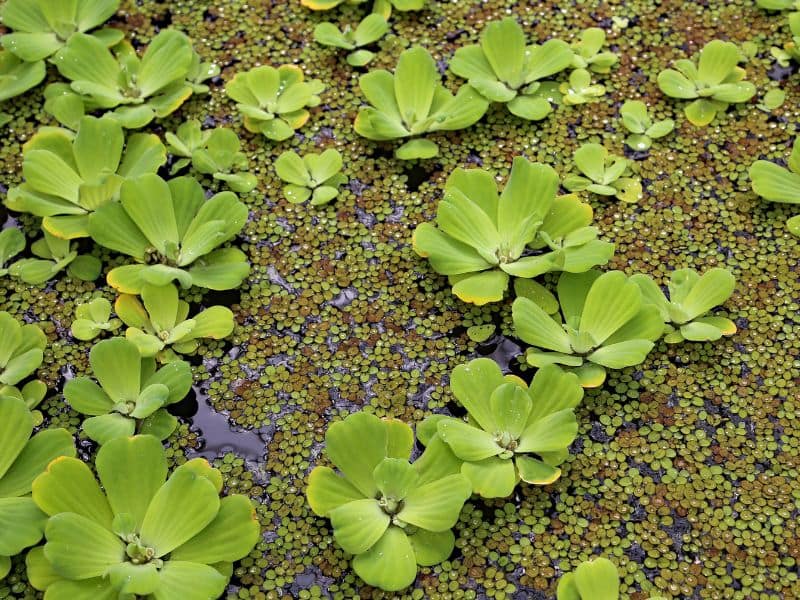
- Medical treatment
There are various medical uses of Pistia stratiotes throughout regions in Asia and Africa. In Nigeria, the dried leaves are prepared into a powder form and are applied to wounds and sores for disinfection. A similar use is present in Indian traditional medicine, where the powdered leaf is applied to syphilitic eruptions and skin infections. In Nigeria and Gambia, the leaf is infused in water to create an eyewash to treat allergic conjunctivitis. The eyewash is known to have a cooling and analgesic effect. Therefore, the plant is commonly called ‘eye-pity’ in Africa. In addition, the leaves of Pistia stratiotes can be burned into ash, and in Indian and Nigerian traditional medicine, the ash is used in treating ringworm infections of the scalp.
- Environmental remediation
The high sorption property of water lettuce makes it a great candidate for biodegradable oil sorbents in marine oil spills. Particularly, the leaves of Pistia stratiotes can efficiently absorb significant amounts of hydrocarbons due to its large surface area and hydrophobicity.
As a hyper-accumulator, Pistia stratiotes has been studied as a potential candidate for wastewater treatment plants. The roots and leaves of the plant have been found to absorb excess nutrients and heavy metals, such as zinc, chromium, and cadmium in contaminated waters.
Pistia stratiotes can be grown in water gardens to reduce harmful algal blooms and eutrophic conditions. The plant is able to control the growth of algae by restricting light penetration in the water column and competing for nutrients, with significant uptake of phosphorus and ammonia nitrogen.
IV. How to control
- Chemical control: Herbicides have been effective in controlling Pistia stratiotes: diquat, glyphosate, terbutryn, 2,4-D, among many others. Yet, the use of herbicides must be critically assessed to prevent negative environmental impacts and possible toxic effects on marine life and human health.
- Physical control: Pistia stratiotes can be controlled with mechanical harvesters that remove the water lettuce from the infested waters and transport it to disposal onshore. Larger infestations can be removed with the aid of hydraulic excavators and tractors. To prevent the re-growth of Pistia stratiotes colonies, a long-term maintenance program should be implemented.
- Biological control: Two species of insects are also being used as a biological control. Adults and larvae of the South American weevil Neohydronomous affinis feed on Pistia leaves, as do the larvae of the moth Spodoptera pectinicornis from Thailand. Both are proving to be useful tools in the management of Pistia stratiotes through the experimental recovery of benthic communities with hypoxic conditions.
Find Where to Buy the Best Water Lettuce (Pistia stratiotes)






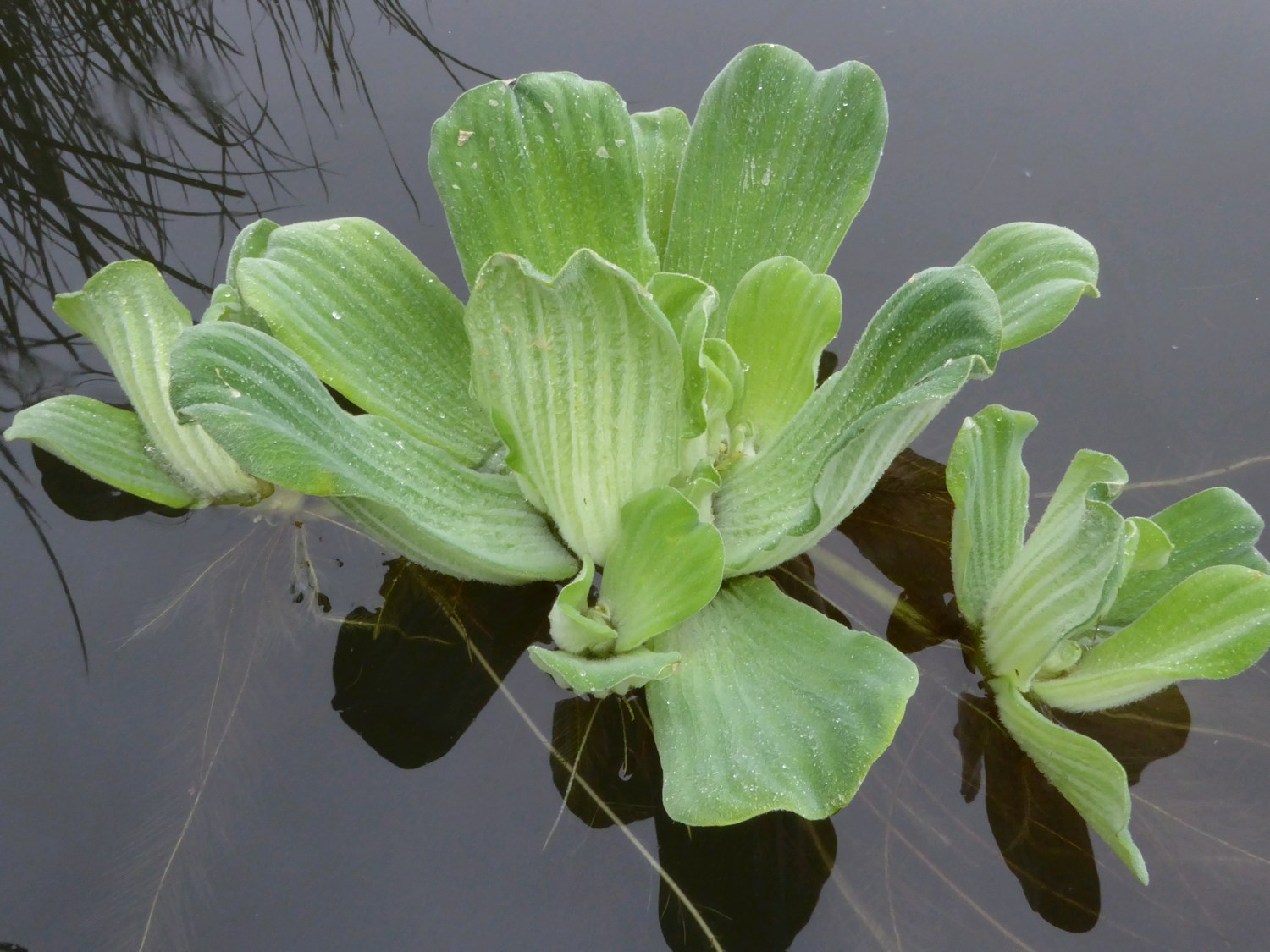
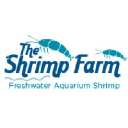
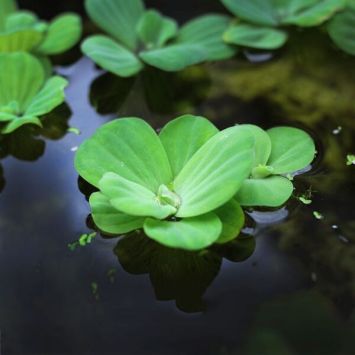
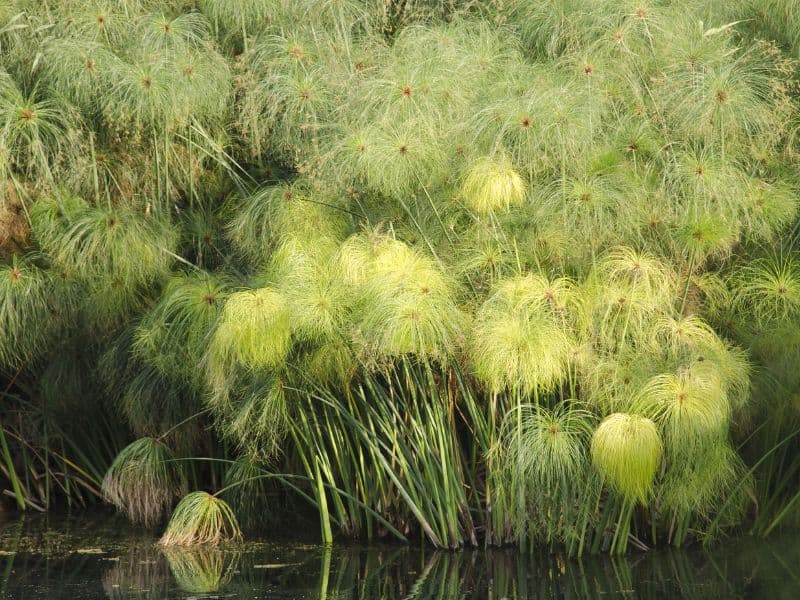
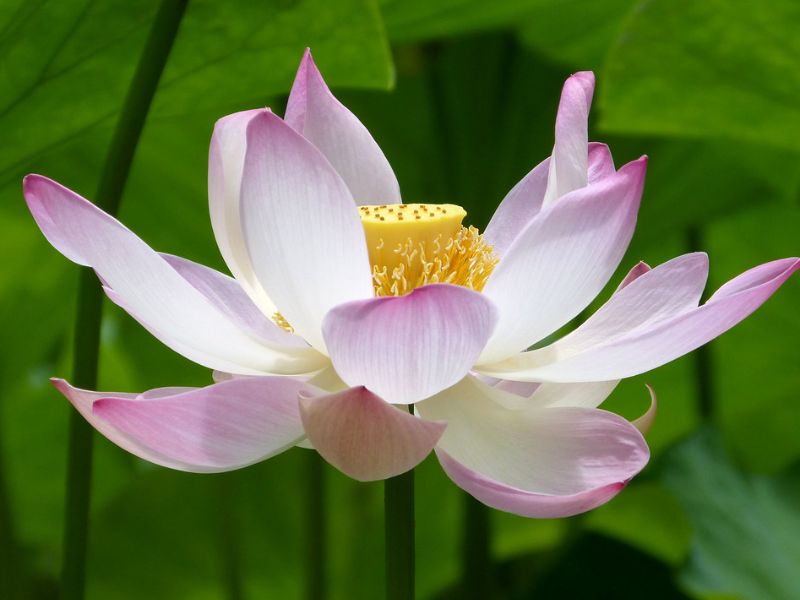
Leave a Reply